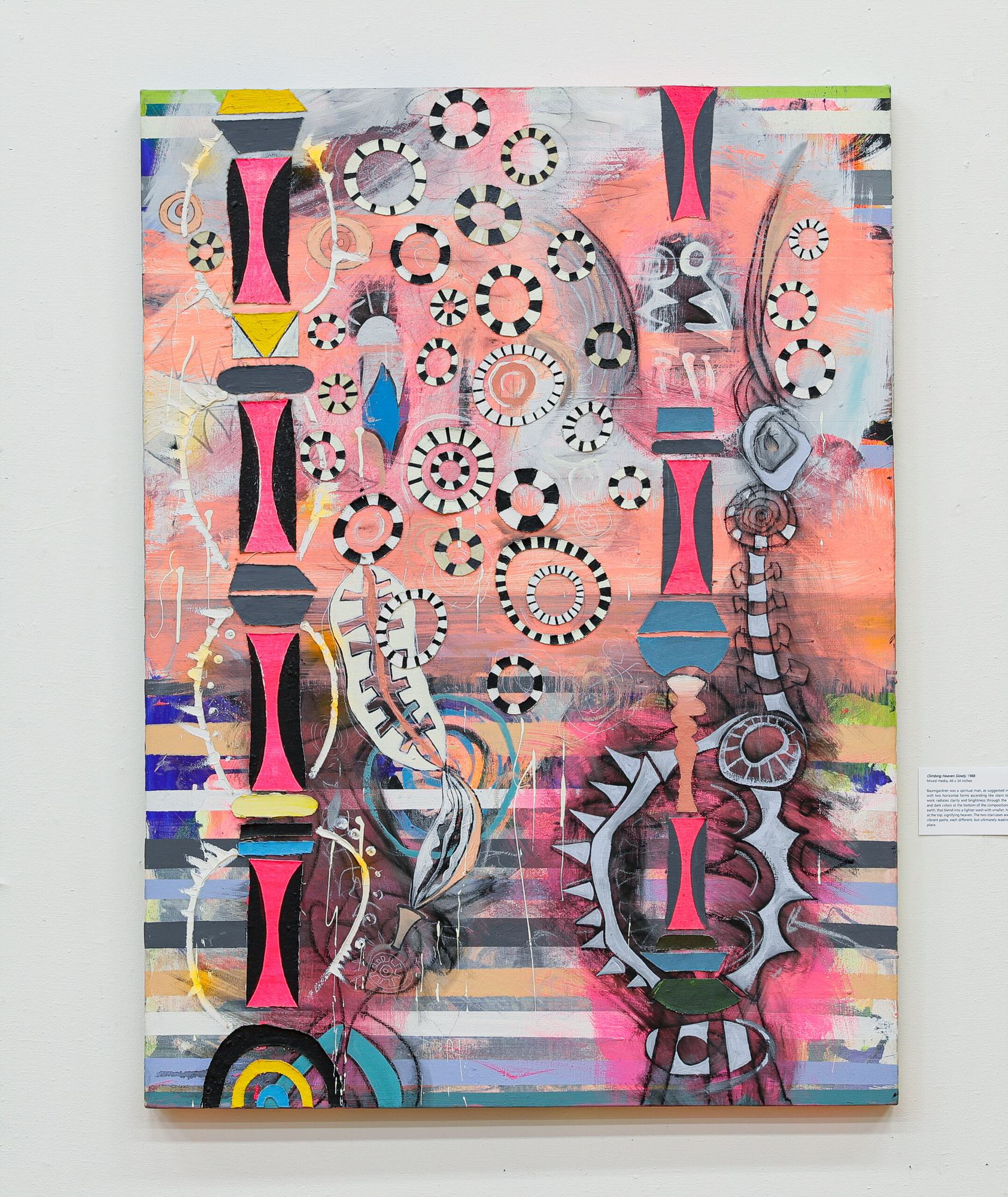On Thursday, Jan. 29, The Matthew C. Baumgardner art display “Grids and Glyphs” was presented during a Zoom webinar hosted by the Furman Art Department. Due to current COVID-19 precautions, only students, faculty, and staff have been granted the opportunity to explore the exhibit in person, so this webinar marked the its first unveiling to the public. The event also marked the second collaboration between Furman and Baumgardner, his first being “Cubes,” which displayed in late 2019 at the James B. Duke Library.
“Grids and Glyphs'' not only displays Baumgardner’s intricate and abstract art, but also proves how rewarding and fruitful a multi-student/department collaboration can be. While the exhibit itself highlights beautiful pieces, the student artistry involved in bringing Baumgardner’s various creations to life is also a feat worthy of celebration.

The exhibit begins with pieces relating to Baumgardner’s origins and is aptly named “Early Life.” Highlights include “Frozen Fantasy,” “Composition #240,” “The Mountain and Evening of Rubies,” and “Warm Silence.” I personally enjoyed the combination of bright colors and cubism in “Composition #240.” As stated in the section’s description, these works showcase Baumgardner’s skill at integrating elements of nature into more technical pieces — a reoccurring theme throughout the exhibit.
The “New Inspirations” section showcases selected works from 1983-1992, and truly exhibits a level of abstraction that can be likened to the works of Pollock and Picasso. For example, though the piece “Climbing Heaven Slowly” can feel very overwhelming at a first glance, further inspection reveals intricate circular designs set against a beautiful pinkish-peach shaded background, overall resulting in a very thought-provoking and interesting work.
The next section of works features Baumgardner’s distinct style of painting known as “mud” style, a technique that has earned the artist several awards from the National Endowment for the Arts. Also contained in this section are pieces included in a collection associated with the events of Sept. 11. I find that these specific pieces, titled “Windows in the Sky #48” and “Sacred Trance #4,” speak volumes whilst feeling much more minimalist in comparison to the rest of the exhibit.
Finally, the last segment, titled “Travelers Rest,” includes art created in his Greenville studio. In a way, this section explores the cultivation of Baumgardner’s technique and artistry across his entire career, with pieces like “Coral Reef” showing the perfect balance between abstraction and geometrical design, brought to a new level with his “mud” style painting technique. Also included in the exhibit is one of Baumgardner’s cube works, as well as a drop cloth and some paint cans that he used in his studio.
It is clear that an incredible amount of effort went into cultivating the pieces of this exhibit, and I was astounded to find out just how much student participation went into making this event come to life. All nine students from Dr. Fischer’s ART-274 class had a significant role in both presenting this exhibit to the public and creating a wonderful tribute to Matthew Baumgardner’s career and art. Even with the current circumstances of limited in-person interaction, this group was able to present something professionally. I hope that this collaborative effort can serve as a superb example of how student-led projects can result in positive creations for both their respective departments and the Furman community as a whole.
